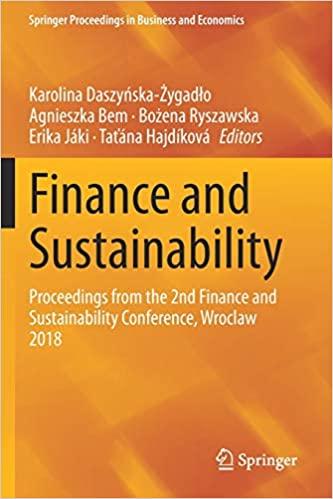Answered step by step
Verified Expert Solution
Question
1 Approved Answer
observed capital structures given in Table 15.3 of the text. What do you notice about the types of industries with respect to their average debt-equity
observed capital structures given in Table 15.3 of the text. What do you notice about the types of industries with respect to their average debt-equity ratios? Are certain types of industries more likely to be highly leveraged than others? What are some possible reasons for this observed segmentation? Do the operating results and tax history of the firms play a role? How about their future earnings prospects? Explain. he bottom panel of Table 14.4 shows payoffs under Strategy B, which we call the home- made leverage strategy. First, observe the middle column, which indicates that 200 shares of the unlevered equity are expected to generate $600 of earnings. Assuming that the $2,000 is borrowed at a 10 percent interest rate, the interest expense is $200 (? .10 ? $2,000). Thus, the net earnings are expected to be $400. A similar calculation generates net earnings of either $0 or $800 in recession or expansion, respectively. Now, let us compare these two strategies, both in terms of net earnings and in terms of initial cost. The top panel of the table shows that Strategy A generates earnings of $0, $400, and $800 in the three states. The bottom panel of the table shows that Strategy B generates the same net earnings in the three states. The top panel of the table shows that Strategy A involves an initial cost of $2,000. Simi- larly, the bottom panel shows an identical net cost of $2,000 for Strategy B. This shows a very important result. Both the cost and the payoff from the two strategies are the same. Thus, one must conclude that Trans Am is neither helping nor hurting its stockholders by restructuring. In other words, an investor is not receiving anything from corporate leverage that she could not receive on her own. Note that, as shown in Table 14.1, the equity of the unlevered firm is valued at $8,000. Since the equity of the levered firm is $4,000 and its debt is $4,000, the value of the levered firm is also $8,000. Now suppose that, for whatever reason, the value of the levered firm were actually greater than the value of the unlevered firm. Here, Strategy A would cost more than Strategy B. In this case, an investor would prefer to borrow on his own account and invest in the stock of the unlevered firm. He would get the same net earnings each year as if he had invested in the stock of the levered firm. However, his cost would be less. The strategy would not be unique to our investor. Given the higher value of the levered firm, no rational investor would invest in the stock of the levered firm. Anyone desiring shares in the levered firm would get the same dollar return more cheaply by borrowing to finance a purchase of the unlevered firm
Step by Step Solution
There are 3 Steps involved in it
Step: 1

Get Instant Access to Expert-Tailored Solutions
See step-by-step solutions with expert insights and AI powered tools for academic success
Step: 2

Step: 3

Ace Your Homework with AI
Get the answers you need in no time with our AI-driven, step-by-step assistance
Get Started


